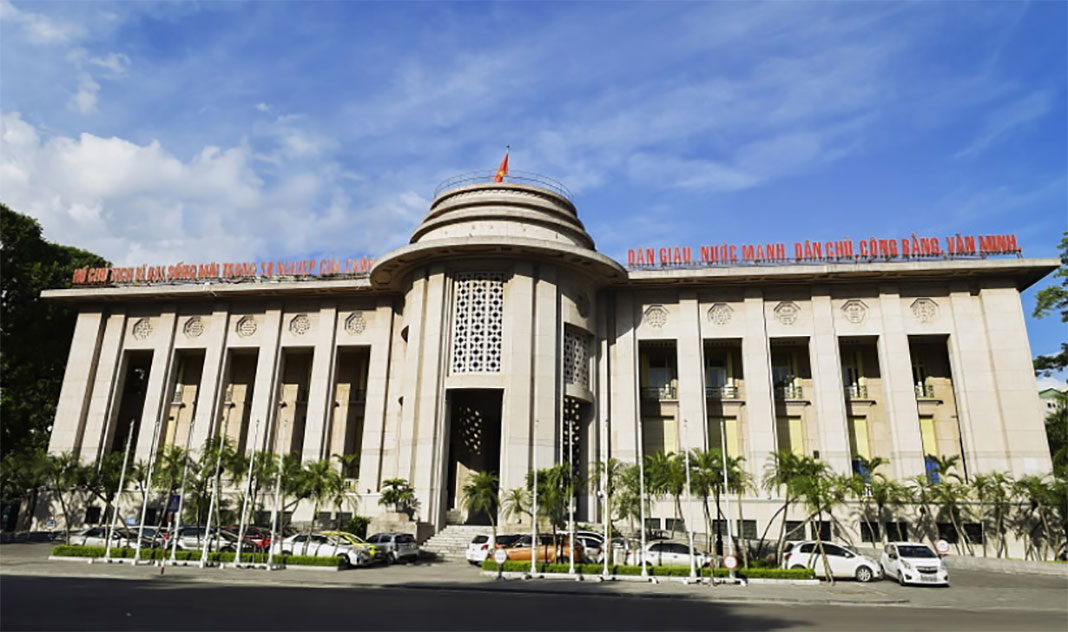HCMC – The State Bank of Vietnam, the central bank, announced five separate decisions today, March 31, to further lower some key interest rates, with effect from April 3. This is the second round of rate cuts in March.
The SBV said the forthcoming rate reductions were part of the efforts of the National Assembly and the Government to cope with difficulties faced by businesses and households, and prop up the economic recovery.
The refinancing rate, which the central bank applies to short-term loans for commercial banks, will go down by 50 basis points to 5.5% per year. But the rediscount rate for valuable papers will stay unchanged at 3.5% per year.
The rate for overnight loans in interbank electronic payments and loans made by the central bank in clearing transactions with commercial banks will be kept unchanged at 6% per year.
The maximum interest rate for demand deposits in Vietnamese dong currency and deposits with a term of less than one month will edge down from 1% to 0.5%. The rate cap for deposits with terms ranging from one month to less than six months will be lowered by 50 basis points to 5.5%.
The highest rate for Vietnam dong deposits at people’s credit funds and micro-finance organizations will decline from 6.5% to 6% per year.
Banking institutions can decide interest rates for deposits of more than six months depending on market conditions.
The interest rate cap for short-term loans in Vietnamese dong for priority sectors will fall by 50 basis points to 4.5% per year. But at people’s credit funds and micro-finance organizations, this rate will be adjusted down from 6% to 5.5% per year.
The rate for deposits in Vietnamese dong will decline by 30 basis points to 0.5% per year at State Treasury, Deposit Insurance of Vietnam, Vietnam Development Bank, Vietnam Bank for Social Policies, people’s credit funds, and micro-finance organizations. The rate for foreign currency deposits at State Treasury will stay unchanged at 0%.
The SBV said in a statement posted on its website today, March 31, that the SBV has adopted a solid, proactive, flexible and timely approach toward monetary policy and banking operations.
Monetary policy has been harmonized with fiscal and other macroeconomic policies to harness inflation, and stabilize the macroeconomy and the monetary market so that interest rates could be lowered to support businesses and individuals and thus fuel economic growth.
On March 14, the SBV made two separate decisions to lower interest rates by 0.5 to one percentage point, with effect from March 15.









